The fun of fungi: an autumn bonanza at Carsphairn
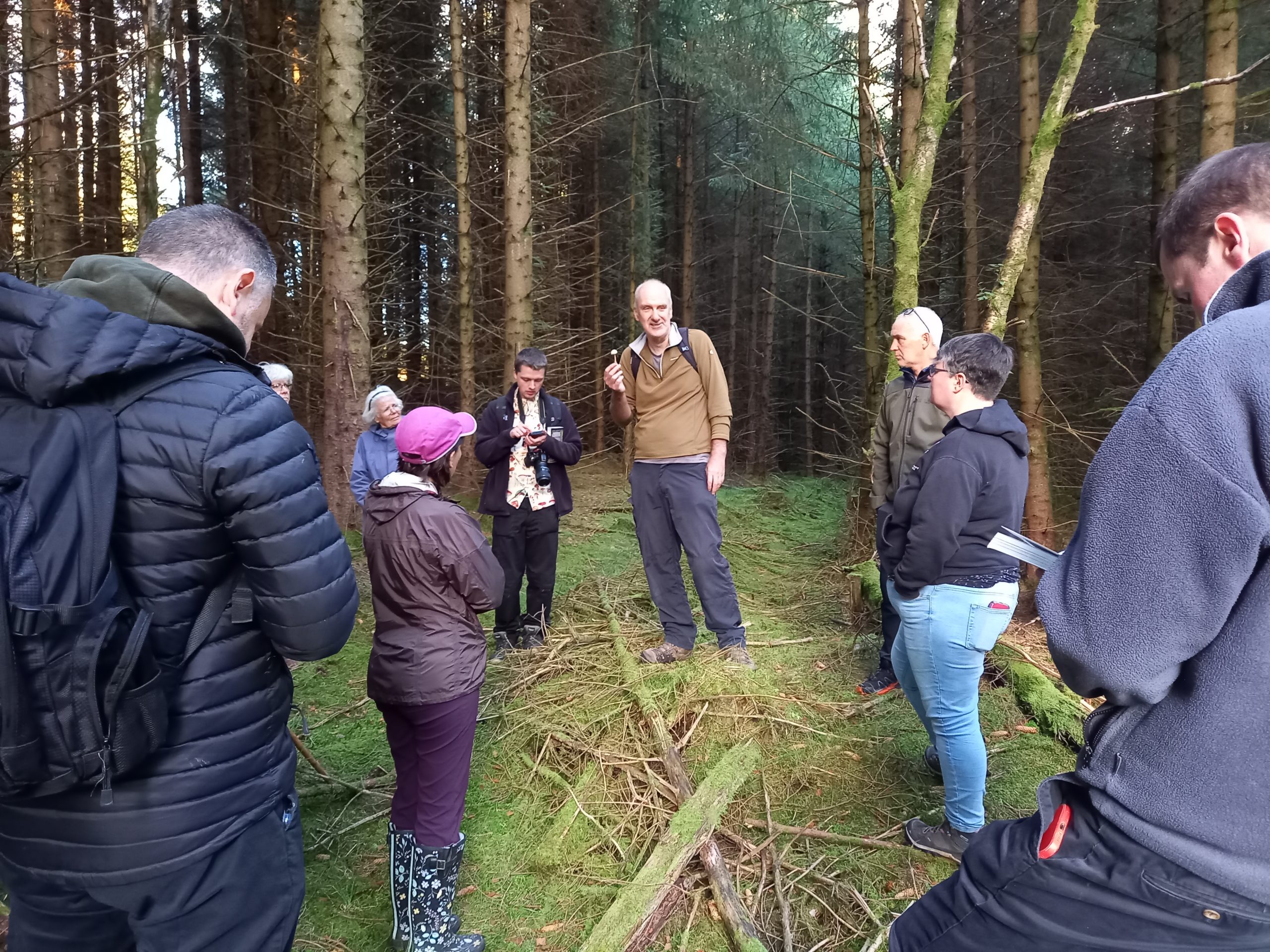
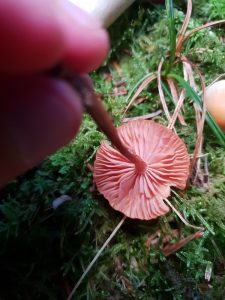 We and our partners Galloway Glens and Carsphairn Community Woodland wrapped up our Autumn Wildlife Bonanza this week with a walk and talk about mushrooms, fungi, and marvellous mycelium, let by Peter Norman of the SW Scotland Environmental Information Centre (SWSEIC). Wednesday evening’s event was the last in a programme that invited local people to discover more about the flora and fauna that lives at Muirdrochwood, a forested area that has been purchased by the community.
We and our partners Galloway Glens and Carsphairn Community Woodland wrapped up our Autumn Wildlife Bonanza this week with a walk and talk about mushrooms, fungi, and marvellous mycelium, let by Peter Norman of the SW Scotland Environmental Information Centre (SWSEIC). Wednesday evening’s event was the last in a programme that invited local people to discover more about the flora and fauna that lives at Muirdrochwood, a forested area that has been purchased by the community.
Disclaimer! The information in this article should not be used to identify fungi for human consumption.
There are over 10,000 species of fungi in the UK of which only 2,000-3,000 produce sporocarps – the fruiting body we often call toadstools or mushrooms. Peter eloquently described the two commonest varieties of typical fungi: those with gills such as Agaricales (pictured left), and those with pores including boletes and bracket fungi.
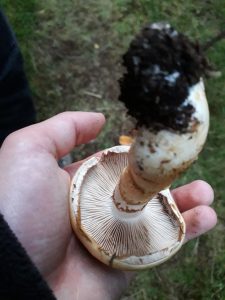 One of the highlights of the event was the birch webcap (Cotinarius triumphans, pictured right), a rarely recorded species which according to the Fungal Records Database has only three records in Ayrshire and two in Galloway, all of which all are located with 20km of Carsphairn! It is therefore a local speciality which, whilst attractive, is considered inedible and best avoided due to its close relation to several toxic species.
One of the highlights of the event was the birch webcap (Cotinarius triumphans, pictured right), a rarely recorded species which according to the Fungal Records Database has only three records in Ayrshire and two in Galloway, all of which all are located with 20km of Carsphairn! It is therefore a local speciality which, whilst attractive, is considered inedible and best avoided due to its close relation to several toxic species.
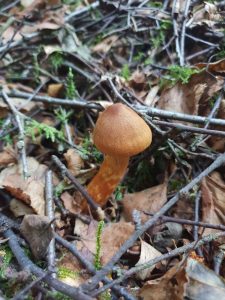 One of the UK’s most lethal fungi, the deadly webcap (Cortinarius rubellus, pictured left), is seldom recorded but occasionally mistaken for chanterelles, resulting in serious bodily harm and even death. Nicholas Evans, author of The Horse Whisperer, made that dire mistake resulting in him and his family being hospitalized. The toxin within this fungus contains orellanin and is slow acting, taking up to a fortnight for symptoms to develop. It severely damages the kidneys and liver often requiring a transplant to save the life of the unsuspecting victim, as in Evans’ case.
One of the UK’s most lethal fungi, the deadly webcap (Cortinarius rubellus, pictured left), is seldom recorded but occasionally mistaken for chanterelles, resulting in serious bodily harm and even death. Nicholas Evans, author of The Horse Whisperer, made that dire mistake resulting in him and his family being hospitalized. The toxin within this fungus contains orellanin and is slow acting, taking up to a fortnight for symptoms to develop. It severely damages the kidneys and liver often requiring a transplant to save the life of the unsuspecting victim, as in Evans’ case.
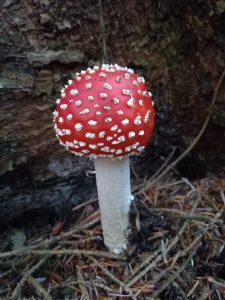 Perhaps the most infamous ‘toadstool’ of all is the fly agaric (Amanita muscaria, pictured right) which made an appearance on Wednesday. It should be noted that on a scientific basis there is no definitive difference between a toadstool and a fungus. It is rather a cultural reference used to denote edible and poisonous varieties. Whilst fly agaric are mildly toxic to humans, reindeer are immune. A fact which reindeer herders from Northern Europe and Asia have utilized: the reindeer can be fed the fungus and the urine collected and drank for a hallucinogenic trip!
Perhaps the most infamous ‘toadstool’ of all is the fly agaric (Amanita muscaria, pictured right) which made an appearance on Wednesday. It should be noted that on a scientific basis there is no definitive difference between a toadstool and a fungus. It is rather a cultural reference used to denote edible and poisonous varieties. Whilst fly agaric are mildly toxic to humans, reindeer are immune. A fact which reindeer herders from Northern Europe and Asia have utilized: the reindeer can be fed the fungus and the urine collected and drank for a hallucinogenic trip!
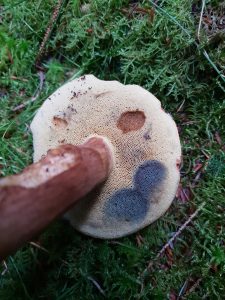 We found dozens of boletes including the bay bolete (Imleria badida) and penny bun (Boletus edulis) which are both edible species, though most of the fruiting bodies had been feasted on by slugs and maggots and thus no longer suitable for human consumption. The bay bolete stains a stunning blue when damaged (pictured left), which is caused by enzymes oxidizing on contact with the air, just as apples do.
We found dozens of boletes including the bay bolete (Imleria badida) and penny bun (Boletus edulis) which are both edible species, though most of the fruiting bodies had been feasted on by slugs and maggots and thus no longer suitable for human consumption. The bay bolete stains a stunning blue when damaged (pictured left), which is caused by enzymes oxidizing on contact with the air, just as apples do.
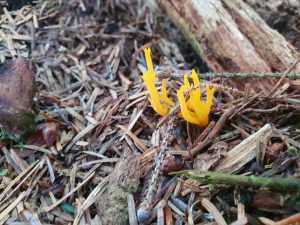 One of the best fungi finds was the yellow staghorn (Calocera viscosa, pictured right) which defies our fungal norms: it is imperforate, lacking any pore or gills. This is a jelly-like fungus from Dacrymycetes, a specialist of conifer stumps and roots characterized by branching like antlers.
One of the best fungi finds was the yellow staghorn (Calocera viscosa, pictured right) which defies our fungal norms: it is imperforate, lacking any pore or gills. This is a jelly-like fungus from Dacrymycetes, a specialist of conifer stumps and roots characterized by branching like antlers.
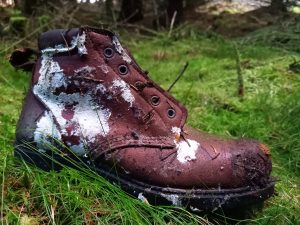 Perhaps the most elusive discovery of the evening was the rare boot fungus (Tabernus crypticus, pictured left) an elusive species just recently described by science. It is endemic to Southern Scotland, but mycologist beware for this species will readily infect footwear of any kind, the more pungent the higher the risk of infection, so good foot hygiene is advised!
Perhaps the most elusive discovery of the evening was the rare boot fungus (Tabernus crypticus, pictured left) an elusive species just recently described by science. It is endemic to Southern Scotland, but mycologist beware for this species will readily infect footwear of any kind, the more pungent the higher the risk of infection, so good foot hygiene is advised!
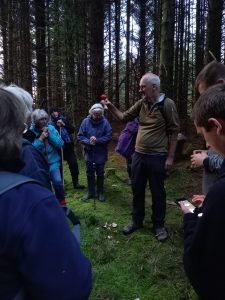 Many thanks to Peter Norman for leading the event, Galloway Glens for planning it and to all those who attend. It is our sincere hope that those able and unable to attend will be inspired to appreciate our fungal biodiversity.
Many thanks to Peter Norman for leading the event, Galloway Glens for planning it and to all those who attend. It is our sincere hope that those able and unable to attend will be inspired to appreciate our fungal biodiversity.
For those interested, local fungal records remain sparse and therefore it would be beneficial if you are able to log any identifiable species you find via iRecord or iNaturalist, helping improve our local understanding.
If you have any questions on how to use these apps, please contact the Biosphere’s Project Support Officer, Malcolm Haddow via malcolm@gsabiosphere.org.uk.
